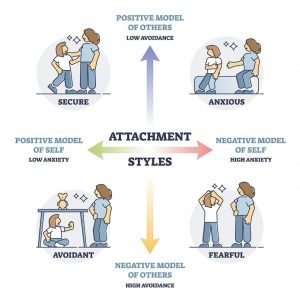Term: Attachment theory
Introduction:
This purpose of this assignment is to define a term with various levels of detail to non-technical readers. For this assignment I will be providing my group with a parenthetical, sentence, and expanded definition for the term attachment theory, which is commonly used in the field of psychology and psychoanalysis.
Reading situation:
A counsellor explaining a term to a client who is experiencing difficulties in their relationship.
Parenthetical definition:
Certain behaviours people display in relationships can be explained by attachment theory (psychological theory concerning relationships between humans).
Sentence definition:
Attachment theory refers to the concept that explains the emotional development and behaviour of a person in a relationship based on the emotional bond they shared as an infant with their primary caregiver.
Expanded definition
History:
Attachment theory is based on the work of John Bowlby and Mary Ainsworth. John Bowlby started developing the theory in the 1930s and based it on ethology (the study of animal behaviour and its formation with evolution), control systems theory (the idea that behaviour is a means of controlling perception), and psychoanalytic thinking which was a concept introduced to psychology by Freud (Bretherton, 1992). Bowlby proposed that the mother needed to be emotionally available when her child was distressed, and since babies cannot self-regulate, they relied on their mother to keep them emotionally regulated (Fitton, 2012). In the 1970s, Ainsworth developed the strange situation experiment, where infants and their caregivers were placed in a stressful situation that activated the child’s attachment system. Depending on the child’s reaction both to the stressful situation and to their primary caregiver right after experiencing the stressful situation, their specific style of attachment could be identified.
Operating principle of attachment theory:
The operating principle of attachment theory is that if the primary caregiver is emotionally available and responsive, the child will develop a sense of security. The nature of this attachment relationship promotes confidence and competence in interaction with the social environment as the child develops a positive model of others and themselves (Fitton, 2012). However, if the caregiver is not emotionally available or if there is any abuse or neglect, this will cause the child to develop an anxious, avoidant, or disorganized attachment pattern. This can possibly lead to higher levels of anxiety and avoidance of others, and as a result they are more likely to struggle forming healthy relationships later in life.
Negation:
Attachment theory is not the same as attachment style, although they are often used in similar contexts. Attachment theory is the broader concept of how interpersonal relationships between child and caregiver effects relationship styles later in life, whereas attachment style refers to the different types of attachment (anxious, insecure, secure, fearful) based on the theory.
Example:
Attachment theory can be used to categorize and explain an anxious attachment style. People with an anxious attachment style generally had caregivers who were emotionally inconsistent during childhood. This leads to a need for emotional connection and closeness (low avoidance) paired with low self-esteem and a fear of rejection (high anxiety). In relationships, people with an anxious attachment style have a constant need for reassurance or attention from their partner, and experience higher levels of anxiety and codependency.

Figure 1
Note. Different attachment styles based on high or low ratings of positive model of others and self. From Simply Psychology, Attachment Styles, by Huang, S, 2020, www.simplypsychology.org/attachment-styles.html
References
Bretherton, I. (1992). The origins of attachment theory: John Bowlby and Mary Ainsworth. Developmental Psychology, 28(5), 759-775. https://doi.org/10.1037/0012-1649.28.5.759
Fitton, V. A. (2012). Attachment theory: History, research, and practice. Psychoanalytic Social Work, 19(1-2), 121-143. https://doi.org/10.1080/15228878.2012.666491
Huang, S (2020, Nov 03). Attachment styles. Simply Psychology. www.simplypsychology.org/attachment-styles.html
Leave a Reply